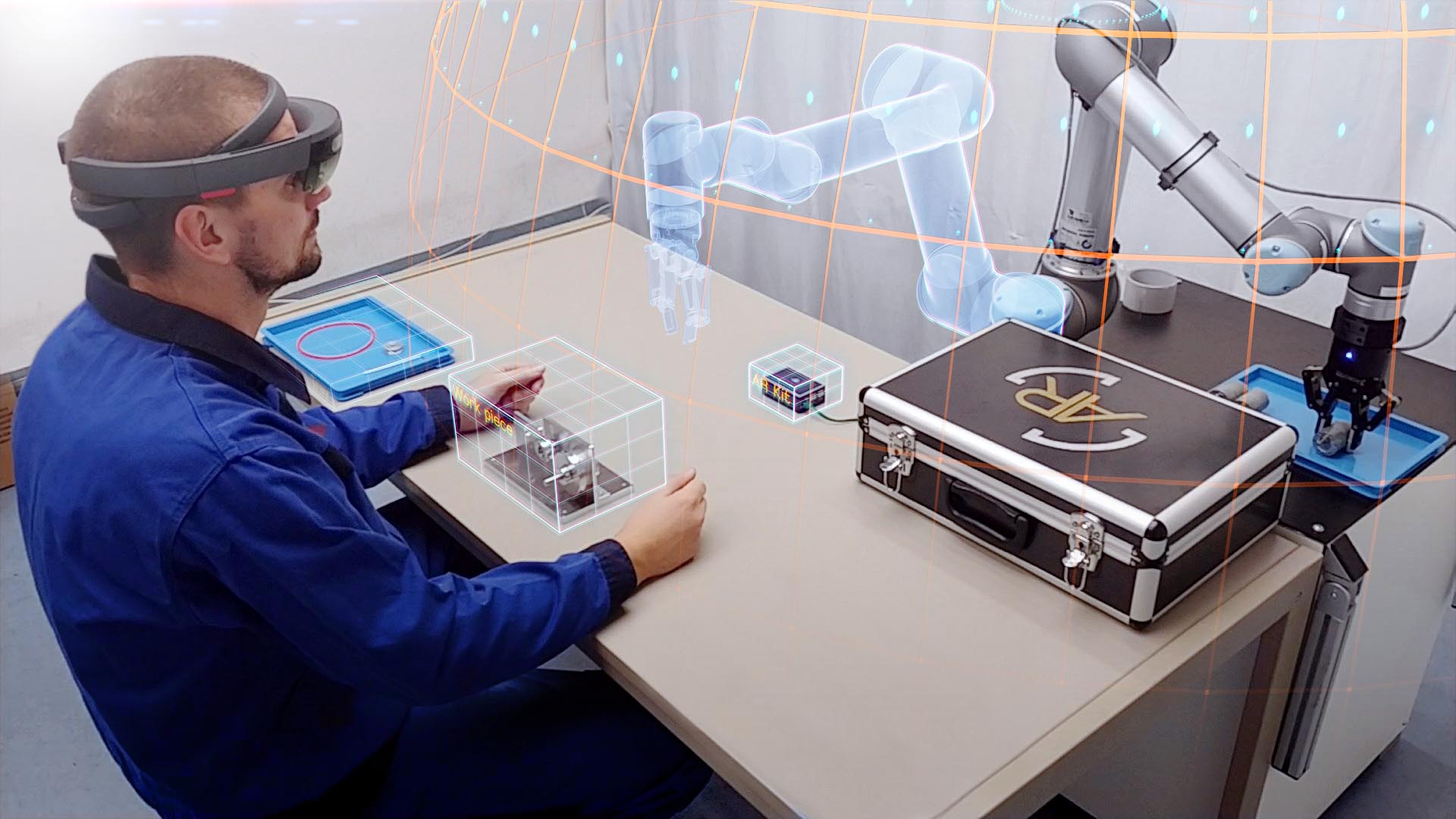Adaptive Assistance Systems
In terms of human-centered automation, our assistance systems support manual work processes according to the individual strengths of man and machine. Hybrid work systems thus enable process efficiency and smooth operation.
Your
benefit
The sustainable integration of workers into more and more complex work systems is a crucial success factor in times of demographic change and skill shortages.
Our
offer
We develop hybrid work systems for production and mobility, providing adaptive physical or cognitive support for human labor: efficient, ergonomic, and, if necessary, individually adapted and networked.
Workplace of the future
We use modern methods of adaptive support, user-centric interaction, and collaboration to leverage the synergistic combination of human and machine strengths towards flexibly and efficiently.
Learn more about our worker assistance solutions
Contact us and identify the potential of your application together with our experts.
Application fields
Smart workplace
Our solutions for intelligent workplaces enable adaptive support of manual work processes, starting with the digital, in other words, paperless, provision of work instructions, e.g., for assembly tasks, to the automated provision of spatial information at the right time and in the right place.
We provide custom-fit digital support for manual work using AI technologies to automatically detect operations, activities, and tools, as well as to control and optimize processes. Besides, we rely on natural communication technologies that enable secure, efficient and customizable process control.
Assembly workstation with integrated tablet for work instructions and augmented reality control of machines
Human robot collaboration
Our systems for seamless human-robot collaboration establish hybrid work systems, including robots performing monotonous and repetitive tasks. In contrast, humans use their sensorimotor skills, abstraction, and problem-solving in close cooperation. User-centered methods of human-machine interaction support these manual work steps.
We offer the development and integration of collaborative work systems that synergistically combine the capabilities of humans and robots. The results are optimized workflows and highly flexible and reliable processes with a high degree of adaptability and high efficiency.
Hybrid work station "Augmented Robots", enabling seamless collaboration through augmented reality and intuitive gesture control: YouTube-Link
Special vehicles and construction machinery
Our solutions for special vehicles and construction machines enable the specific support of human operators through sensory-assisted environmental perception and analysis.
We offer the implementation of assistance functions that increase the efficiency and effectiveness of vehicles and enable the ergonomic design of work processes. We use AI-based environmental perception, intelligent networking of software functions, and the provision of user-centered human-machine interfaces.
Assistance functions for enhanced environmental perception and user support within industrial machine environments
User-centered interaction
The shortage of skilled workers, the demographic change, and a lack of acceptance of new technologies, are significant challenges for work systems in which people remain a critical success factor in the future.
Complex work environment
Complex tasks and environments are increasingly challenging the design of work systems. Often, the operation of machines requires extensive training and expertise.
Intuitive interaction
The use of natural communication aims to provide an intuitive way of interacting. In addition to effortless and efficient operation, we also offer customized interaction methods.
Our formula for success
With the help of AI-based perception and natural interaction, we implement assistance systems that enable the sustainable integration of humans into future work systems.
Learn more about our innovative interaction solutions
Contact us and identify the potential of your application together with our experts.
Gesture-based interaction
In addition to facial expressions and speech, gestures are an essential type of intuitive nonverbal human communication. In addition to haptic interaction (such as touchscreens), non-haptic gestures can be recognized using advanced image processing and AI algorithms-without the need for additional tools (e.g., markers). Gestures also enable intuitive interaction for more complex tasks, such as robot programming, through motion-based demonstration (Programming by Demonstration).
Our solutions support the reliable and robust integration of gesture interaction for industrial applications. Find out more in our technical article on gesture-based communication.
Touch gesture interaction to control an interactive robot exhibit
Augmented Reality & spatial Interaction
Augmented Reality combines virtual worlds and real environments, expanding the user's perception via screens or data glasses by virtual spatial information. Thus, reality and virtuality merge to support manual processes and cognitive decisions.
In addition to real-world simulation, we also implement interactive displays that, in combination with gesture control, represent a new class of industrial interaction systems. Find out more in our technical article on augmented reality interfaces in industrial scenarios.
Videos on AR simulation and control of industrial robots und mobile robots
Modular Technology Portfolio
The foundation for the tailor-made implementation of assistance systems is the seamless interaction of our technologies in the areas of cooperation and AI. With the aid of our modular system, we combine and network them accurately.
Spatio-temporal memory
More in our technical article.
Gestures
More in our technical article.
Augmented-Reality
More in our technical article.
Activity detection
Pose estimation
More in our technical article.
Pose estimation
More in our technical article.


















